Potty Training Without Tears: What Actually Works
Potty training can feel daunting, but with the right techniques, it doesn’t have to be stressful. Understanding what actually works—backed by expert advice and real-world examples—can make the process smoother and even enjoyable. Discover the top evidence-based strategies that help kids transition out of diapers with confidence and minimal tears.
1. Wait for Signs of Readiness
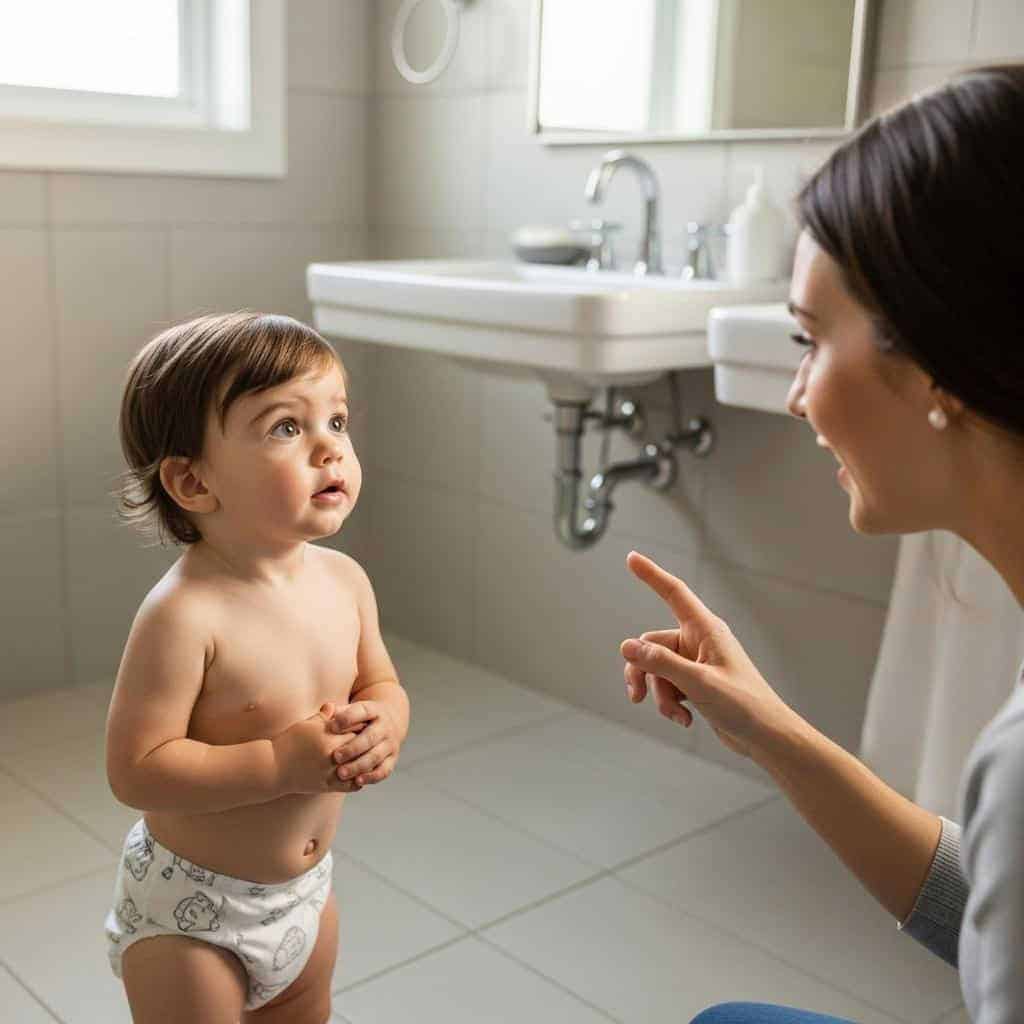
Starting potty training too early can cause frustration for both parents and children. It’s important to look for signs that your child is ready, such as staying dry for longer periods, showing curiosity about adults’ bathroom habits, and being able to follow simple directions. Waiting for these cues before beginning is recommended, as they are essential markers of readiness and increase the likelihood of success.
2. Use a Child-Friendly Potty
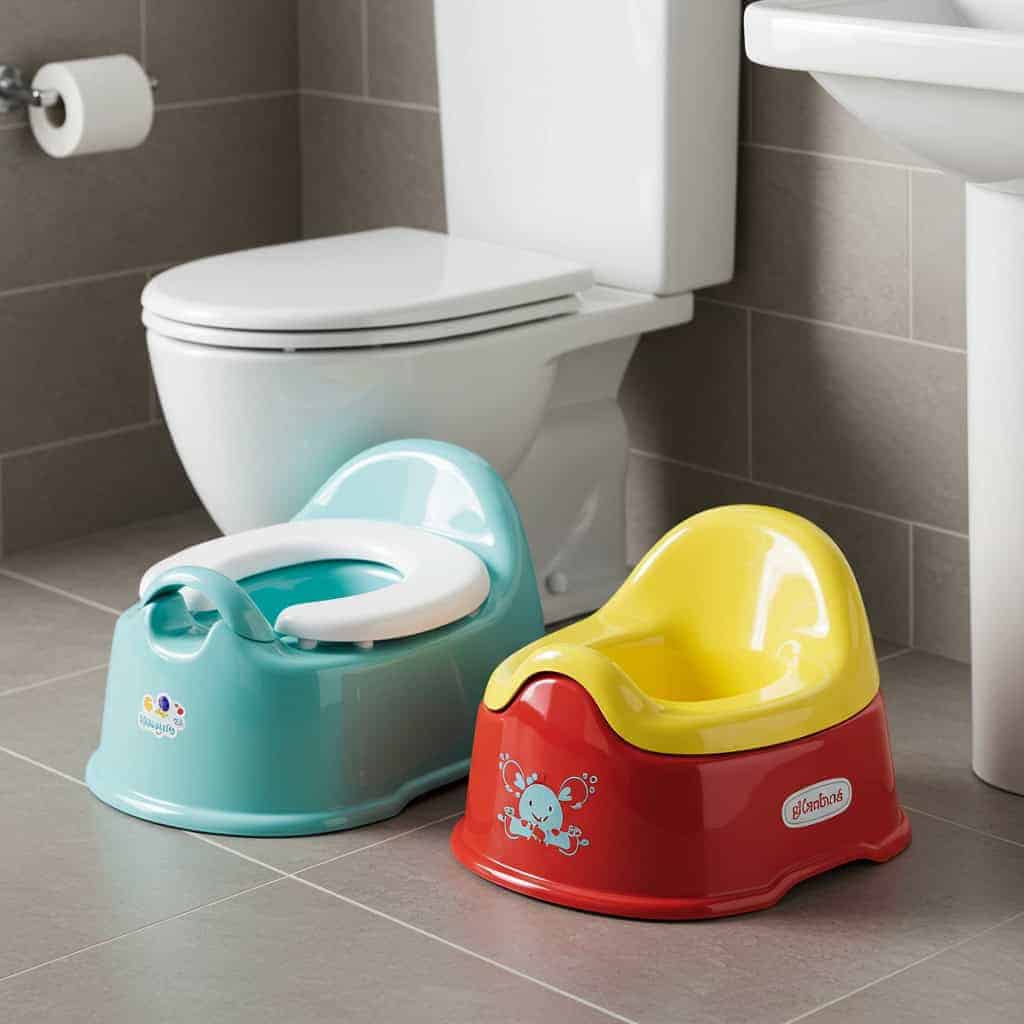
A potty that’s comfortable and accessible encourages independence and makes the process less intimidating. Some families prefer standalone potties, while others opt for seat adapters on regular toilets. Choosing a potty in your child’s favorite color or with fun designs can boost enthusiasm. Letting your child help pick out their potty is suggested to foster a sense of ownership and excitement about this new milestone.
3. Positive Reinforcement Works Wonders

Celebrating every success—no matter how small—can greatly motivate children during potty training. Simple rewards like verbal praise, stickers, or even a special song can make the process fun and encourage continued effort. Research consistently shows that positive reinforcement is much more effective than punishment when it comes to learning new skills. Using encouragement and small rewards to support your child’s progress, helping to build confidence and enthusiasm each step of the way.
4. Stick to a Consistent Routine

Regular bathroom breaks teach children when and how to use the potty. Encouraging visits after meals and before bedtime helps establish predictable habits. Consistency—such as using the same phrases or following the same steps each time—reassures children and reduces anxiety. These routines reinforce expectations and make the process less confusing. Structured routines are key to easing the potty training transition and supporting your child’s sense of security as they learn this new skill.
5. Dress for Success
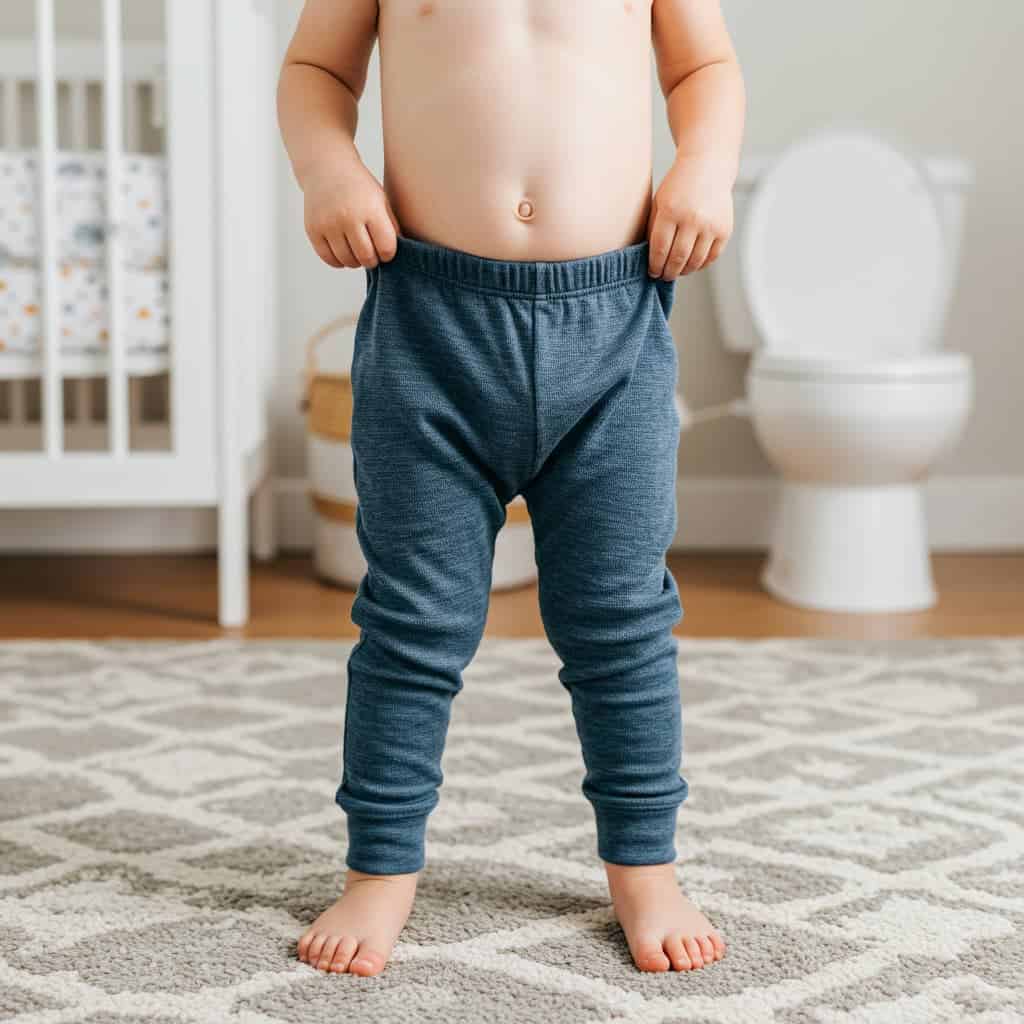
Choosing clothes that are easy to pull down, such as elastic-waist pants, empowers toddlers to act quickly when they feel the urge. Avoid complicated buttons, snaps, or overalls during potty training to prevent accidents and frustration. Simple, accessible clothing supports children’s independence, making it easier for them to use the potty on their own and build confidence during this important developmental stage.
6. Model Bathroom Behavior
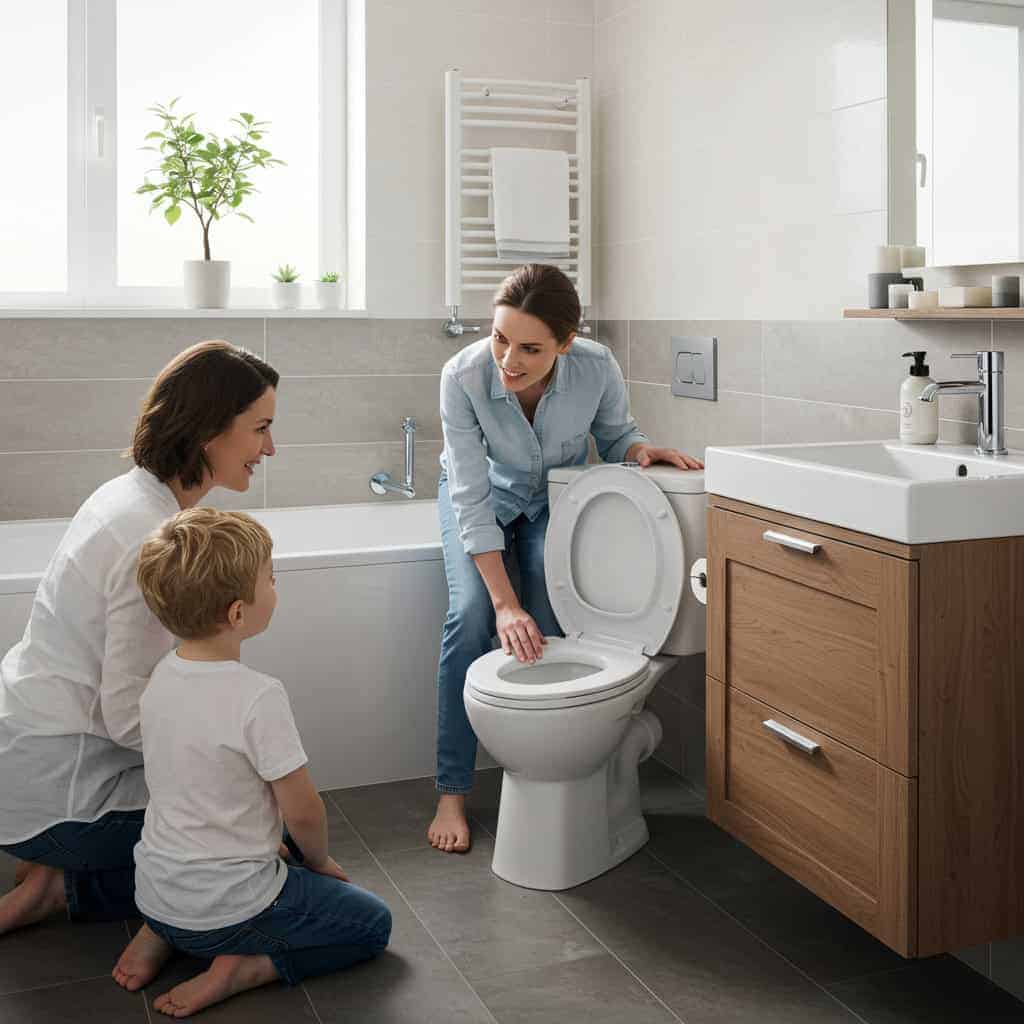
Children learn best by observing the actions of those around them. Letting your child watch trusted family members use the toilet (when appropriate) can help normalize the process and reduce any fear or confusion. Demonstrating important steps like handwashing and flushing also reinforces good hygiene habits from an early age. Modeling is an essential part of learning, making it easier for children to understand and adopt healthy bathroom routines.
7. Use Books and Videos
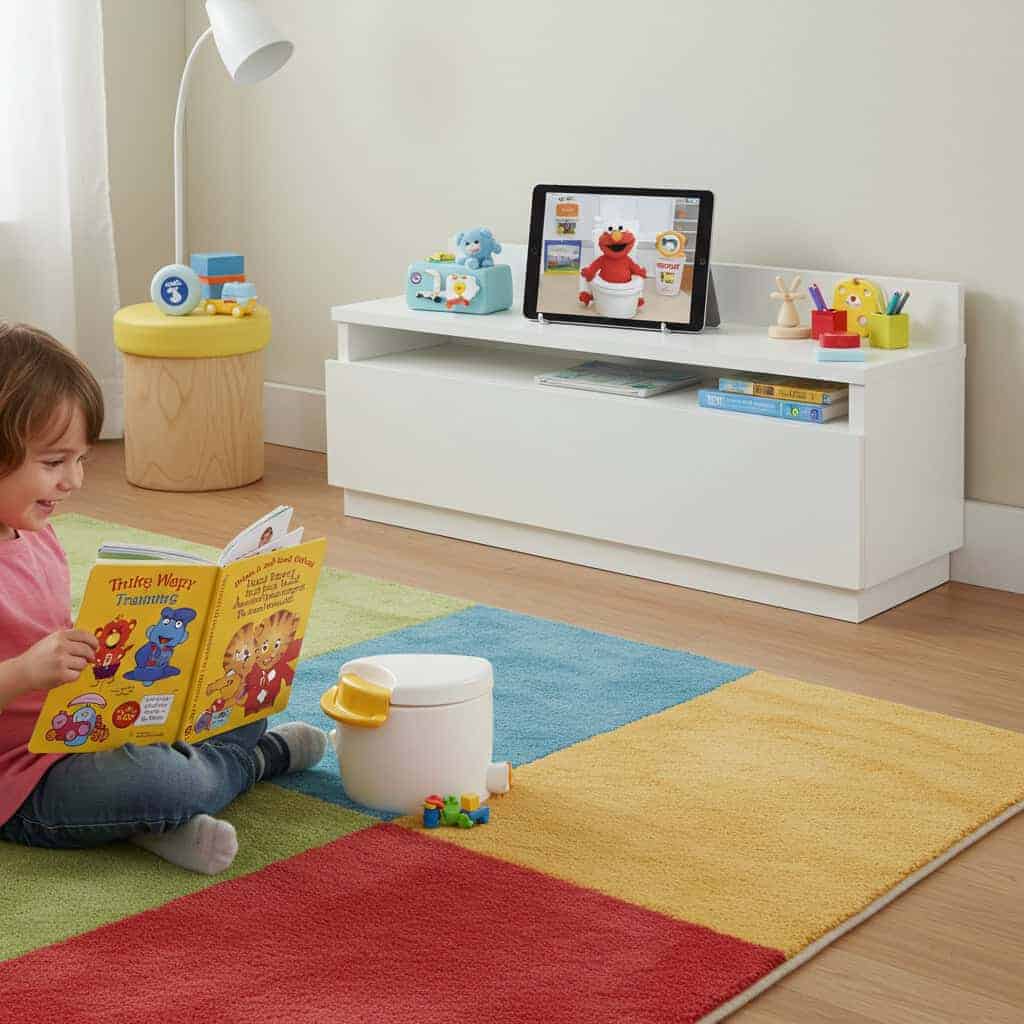
Storybooks and kid-friendly videos about potty training can make the experience enjoyable and relatable for children. Beloved characters like Elmo and Daniel Tiger help demystify the process and reduce anxiety by showing kids what to expect. Using media as a supportive tool can spark interest, prompt conversations, and provide reassurance, making it easier for young children to embrace the changes that come with learning to use the potty.
8. Prepare for Setbacks
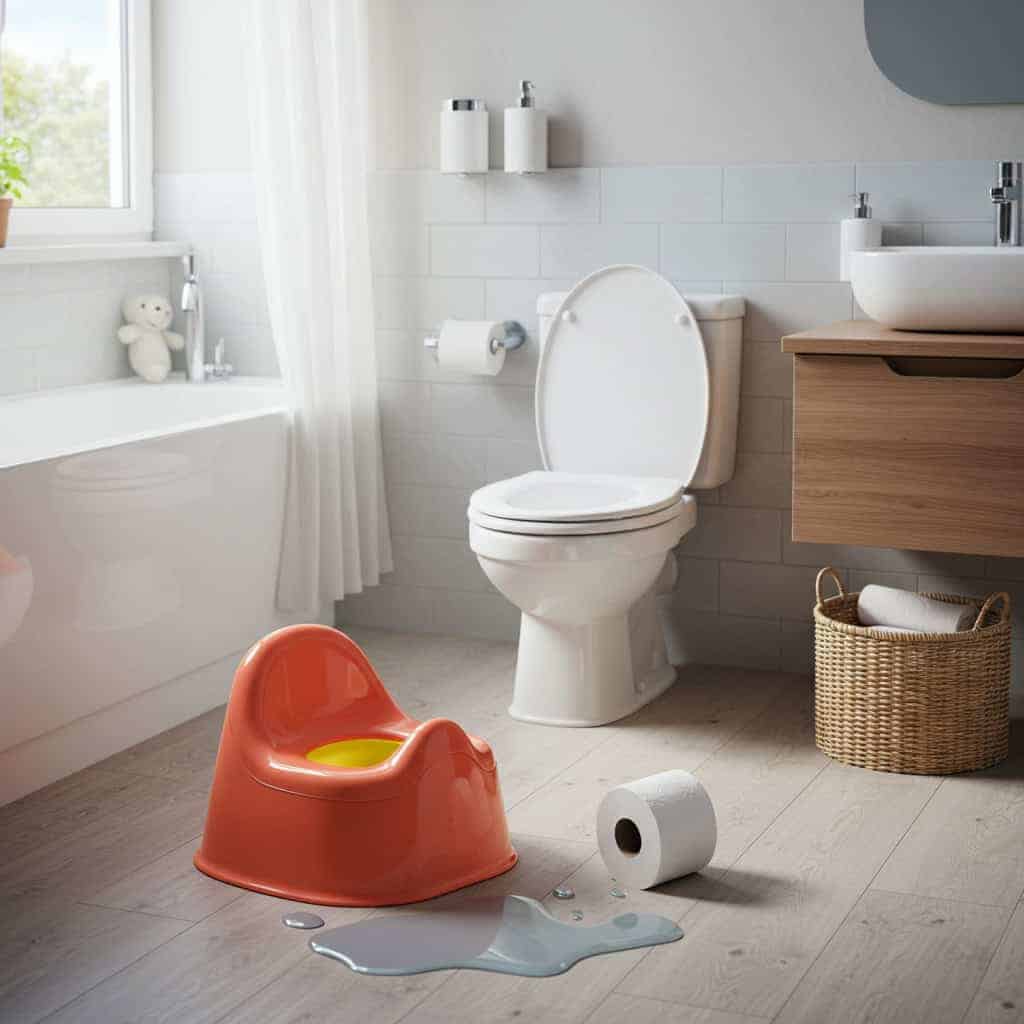
Accidents are a completely normal part of potty training and should be expected. Staying calm and offering reassurance helps your child avoid feelings of shame and builds their confidence to try again. Setbacks, such as regressions, can happen—especially during times of stress or changes in routine. Patience and empathy are crucial during these moments. Responding with understanding and support is recommended, which encourages your child to keep progressing at their own pace.
9. Nighttime Training Takes Time

Achieving nighttime dryness usually follows daytime potty training, and it’s common for children to need several months or even years to consistently stay dry overnight. Parents can use mattress protectors and limit fluids before bedtime to reduce accidents. Patience is essential, as nighttime control develops at each child’s own pace.
10. Know When to Seek Help

If potty training progress stalls or your child shows signs of distress—such as withholding, constipation, or developing a fear of the potty—it may be time to consult a pediatrician. Sometimes, medical or emotional issues can delay success, and professional guidance ensures your child’s health and well-being. There are situations when seeking professional advice is recommended, helping parents address challenges and support their child through a positive potty training journey.
.article-content-img img { width: 100% }




